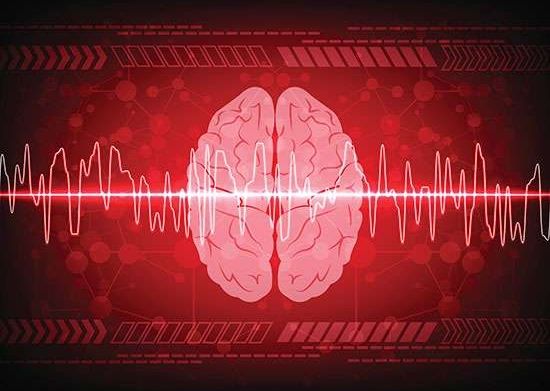Page 9993
Jul 5, 2017
New 3D chip combines computing and data storage
Posted by Klaus Baldauf in categories: biotech/medical, engineering, nanotechnology, robotics/AI
As embedded intelligence is finding its way into ever more areas of our lives, fields ranging from autonomous driving to personalized medicine are generating huge amounts of data. But just as the flood of data is reaching massive proportions, the ability of computer chips to process it into useful information is stalling.
Now, researchers at Stanford University and MIT have built a new chip to overcome this hurdle. The results are published today in the journal Nature, by lead author Max Shulaker, an assistant professor of electrical engineering and computer science at MIT. Shulaker began the work as a PhD student alongside H.-S. Philip Wong and his advisor Subhasish Mitra, professors of electrical engineering and computer science at Stanford. The team also included professors Roger Howe and Krishna Saraswat, also from Stanford.
Computers today comprise different chips cobbled together. There is a chip for computing and a separate chip for data storage, and the connections between the two are limited. As applications analyze increasingly massive volumes of data, the limited rate at which data can be moved between different chips is creating a critical communication “bottleneck.” And with limited real estate on the chip, there is not enough room to place them side-by-side, even as they have been miniaturized (a phenomenon known as Moore’s Law).
Continue reading “New 3D chip combines computing and data storage” »
Jul 5, 2017
Researchers create temperature sensor that runs on almost no power
Posted by Shailesh Prasad in categories: computing, materials
Researchers at UC San Diego have developed a temperature sensor that runs on tiny amounts of power — just 113 picowatts, around 10 billion times less power than a watt. The sensor was described in a study recently published in Scientific Reports. “We’re building systems that have such low power requirements that they could potentially run for years on just a tiny battery,” Hui Wang, an author of the study, said in a statement.
The team created the device by reducing power in two areas. The first was the current source. To do that, they made use of a phenomenon that many researchers in their field are actually trying to get rid of. Transistors often have a gate with which they can stop the flow of electrons in a circuit, but transistors keep getting tinier and tinier. The smaller they get, the thinner the gate material becomes and electrons start to leak through it — a problem called “gate leakage.” Here, the leaked electrons are what’s powering the sensor. “Many researchers are trying to get rid of leakage current, but we are exploiting it to build an ultra-low power current source,” said Hui.
The researchers also reduced power in the way the sensor converts temperature to a digital readout. The result is a temperature sensor that uses 628 times less power than the current state-of-the-art sensors.
Continue reading “Researchers create temperature sensor that runs on almost no power” »
Jul 5, 2017
Wearable that helps you achieve 5 moods on demand
Posted by Shailesh Prasad in categories: mobile phones, wearables

ELF emmit is the world’s first wearable mind stimulating headband, based on pulsed electromagnetic technology. Operates in five different modes: Sleep, Anti-stress, Superlearning, Concentrate, Meditate. Designed to assist you in every area of life. Powered by smart phone or tablet. Operated by free mobile application.
Jul 5, 2017
Study finds hackers could use brainwaves to steal passwords
Posted by Shailesh Prasad in categories: entertainment, robotics/AI, security
Researchers at the University of Alabama at Birmingham suggest that brainwave-sensing headsets, also known as EEG or electroencephalograph headsets, need better security after a study reveals hackers could guess a user’s passwords by monitoring their brainwaves.
EEG headsets are advertised as allowing users to use only their brains to control robotic toys and video games specifically developed to be played with an EEG headset. There are only a handful on the market, and they range in price from $150 to $800.
Nitesh Saxena, Ph.D., associate professor in the UAB College of Arts and Sciences Department of Computer and Information Sciences, and Ph.D. student Ajaya Neupane and former master’s student Md Lutfor Rahman, found that a person who paused a video game and logged into a bank account while wearing an EEG headset was at risk for having their passwords or other sensitive data stolen by a malicious software program.
Jul 5, 2017
10 Amazing Things Scientists Just Did with CRISPR
Posted by Shailesh Prasad in category: biotech/medical
A new tool called CRISPR is letting scientists cut and snip DNA in better ways, and has led to a slew of new research that touches on many human diseases.
Jul 5, 2017
NASA’s Quiet Supersonic Plane Could Soon Take Flight
Posted by Shailesh Prasad in categories: futurism, transportation

It has been more than a decade since the Concorde was retired from service, and since then no passenger aircraft has exceeded the speed of sound. That might change in the not-too-distant future, thanks to a project from NASA and industry partner Lockheed Martin Corporation. The agency is close to testing its design for Quiet Supersonic Transport, or QueSST, which could lead to passenger jets that can again reach supersonic speeds.
The Concorde was never seen as a major commercial success — more of a vanity project for the few European airlines that operated the planes. The nature of supersonic flight meant the sonic boom at ground level could shatter windows. Thus, the plane could only fly at high speeds over the ocean. The trip between Europe and New York was fast, but other routes were not feasible. When the travel industry took a downturn in 2003, the Concorde was mothballed.
Continue reading “NASA’s Quiet Supersonic Plane Could Soon Take Flight” »
Jul 5, 2017
There’s a wearable device that corrects your posture while you slouch at work
Posted by Shailesh Prasad in category: wearables
Jul 5, 2017
Reality check: The hidden connections behind quantum weirdness
Posted by Shailesh Prasad in categories: government, quantum physics

Quantum theory says that stuff doesn’t exist when we’re not looking at it. But weirder-than-weird experiments are resurrecting a long-derided alternative.
By Anil Ananthaswamy
Continue reading “Reality check: The hidden connections behind quantum weirdness” »
Jul 5, 2017
“Self-driving room” adapts to each passenger’s needs
Posted by Shailesh Prasad in categories: robotics/AI, transportation

https://youtube.com/watch?v=Q2_1_YI4Ads
National Electric Vehicle Sweden, which purchased Saab’s assets back in 2012, is using CES Asia to show its vision of autonomous commuting. Owning a car is out in this particular mobility vision, and vehicles not only pick you up and drop you off autonomously, they change their interiors around your needs and whims. So you enjoy a personalized ride and can make the most of every moment.














